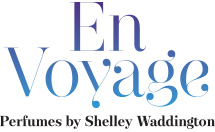Interview: The Perfume Magazine
 Interview with Perfumer Shelley Waddington of EnVoyage Perfumes
Interview with Perfumer Shelley Waddington of EnVoyage Perfumes
November 1, 2011
Perfumer Shelley Waddington of EnVoyage releases three new perfumes:
Eight, Titania and Go Ask Alice
Giveaway!
Shelley Waddington has graciously given us a
1/8 oz Go Ask Alice EDP in a Crystal Brosse Bottle for one lucky person.
Click here to find out how you can win
EnVoyage Perfumes to Release New Perfume
Go Ask Alice
TPM: Shelley, welcome to The Perfume Magazine…
Everyone has heard of Galimard in Grasse, if they have been a student or lover of Perfumery. Tell us about your experience there on location, you must have many wonderful memories. Tell us about your studies and the first perfume you created there.
Thank you for inviting me, Raphaella. The memories that stand out especially are the early spring light and smells of Provence, the kind staff, and how thrilled I was to smell the elegant Galimard perfume materials. It was a remarkable confluence for an inchoate perfumer.
My first creation was an animalic-amber Oriental with a complex boisé base, with a floral heart and floral green citrus top. In retrospect, Guerlain’s Samsara and Lauder’s Youth Dew were in my mind when composing my first complete perfume, although I’m not sure that I fully understood that at the time.
TPM: I understand Galimard was a huge olfactory and professional step that helped set a solid foundation for you today?
Yes, Raphaella, the experience was far reaching. Learning the basics is so helpful in any artistic discipline. In portrait photography, for example, acquiring solid knowledge of basic poses and lighting can put a relative beginner miles ahead of many professionals that are already selling their work. The same is true with perfumery. My time at Galimard solidified my self-identification as a perfumer and instilled a vision for the types of perfumes that I would eventually compose. I am at heart a classical perfumer with a strong leaning toward an unstinting use of naturals – a dearly held paradigm that is only possible in the realm of prohibitively expensive top shelf brands and small independents such as me.
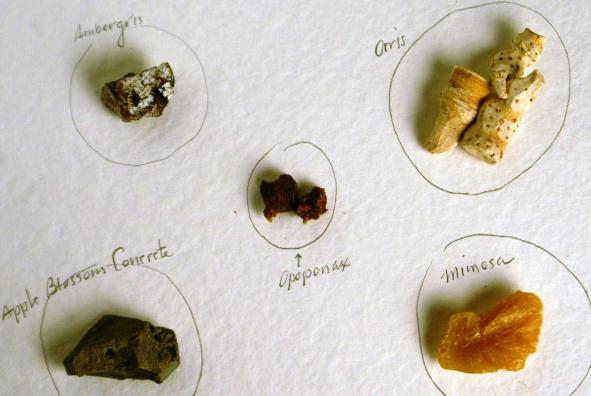
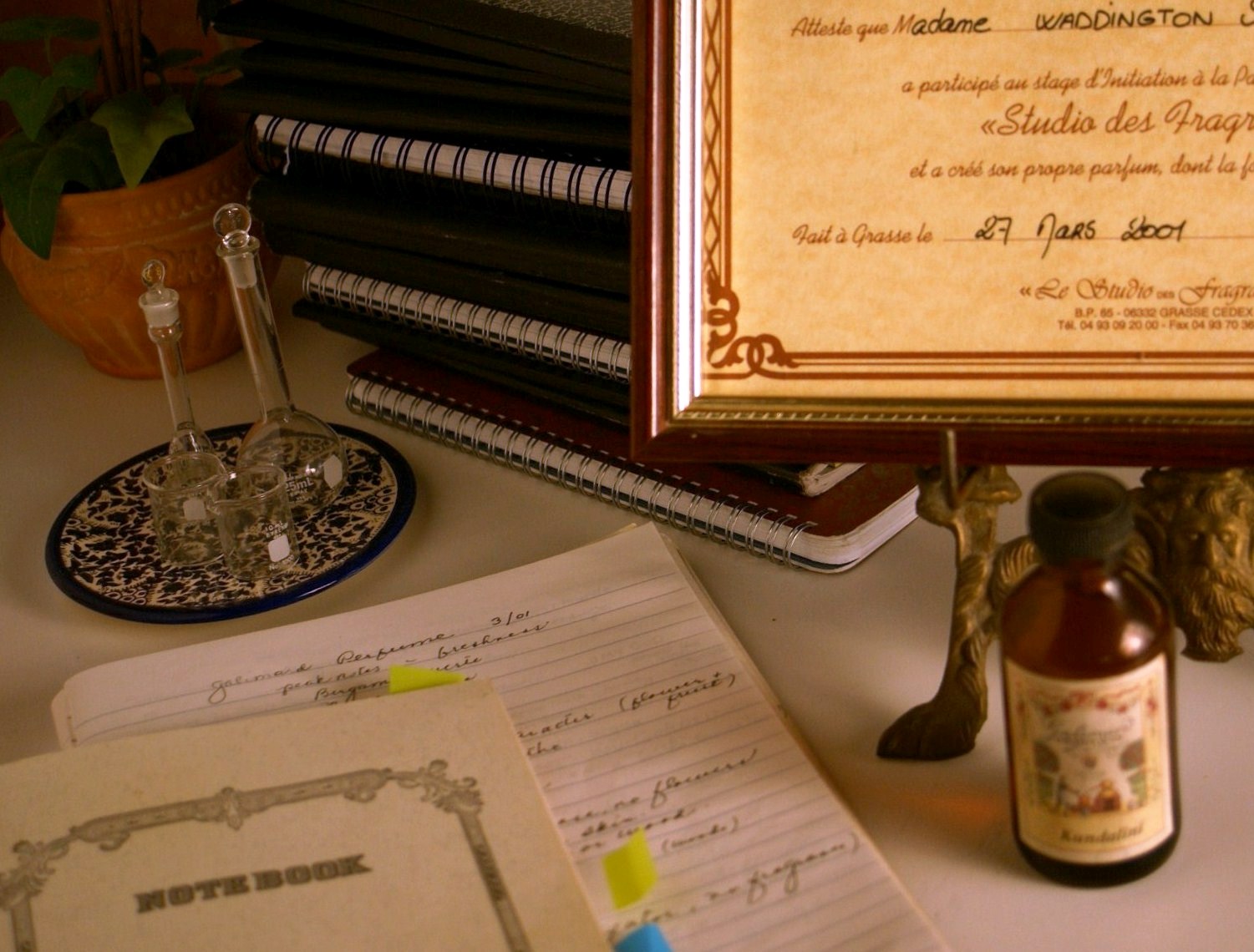
TPM: Do you ever wish to go back to Galimard and Grasse to revisit old memories and see it through new eyes?
I would love to reconstitute my visit with forward looking eyes - the perfume landscape has developed dramatically over the past ten years with the emergence of new materials and concepts. Even though I’m not especially a fan of nostalgia, in a larger sense I seek every opportunity to continue learning. My core belief that the very act of travel stimulates new ideas is reflected in my company name “EnVoyage”.
TPM: There must have been a defining moment that led you to become a perfumer. How did that happen?
I’d describe it as a confluence of core competencies, opportunity, inspiration and drive, and the proximity that has been created by the Internet. I’m one of an organically growing number of individuals across the globe that is now emerging as a recognized and legitimized independent perfumer. We each avidly pursue professional materials, knowledge and training and the Internet allows us to meet with colleagues to methodically share knowledge and resources with each other.
TPM: What others perfumers do you work with and when is your next collaboration?
Vents Ardents and Nectars des Iles with Juan M. Perez was the first collaboration to be released publicly. As you know the timeframe for developing and perfecting a new perfume can be long, but there is are others in development that show real promise.
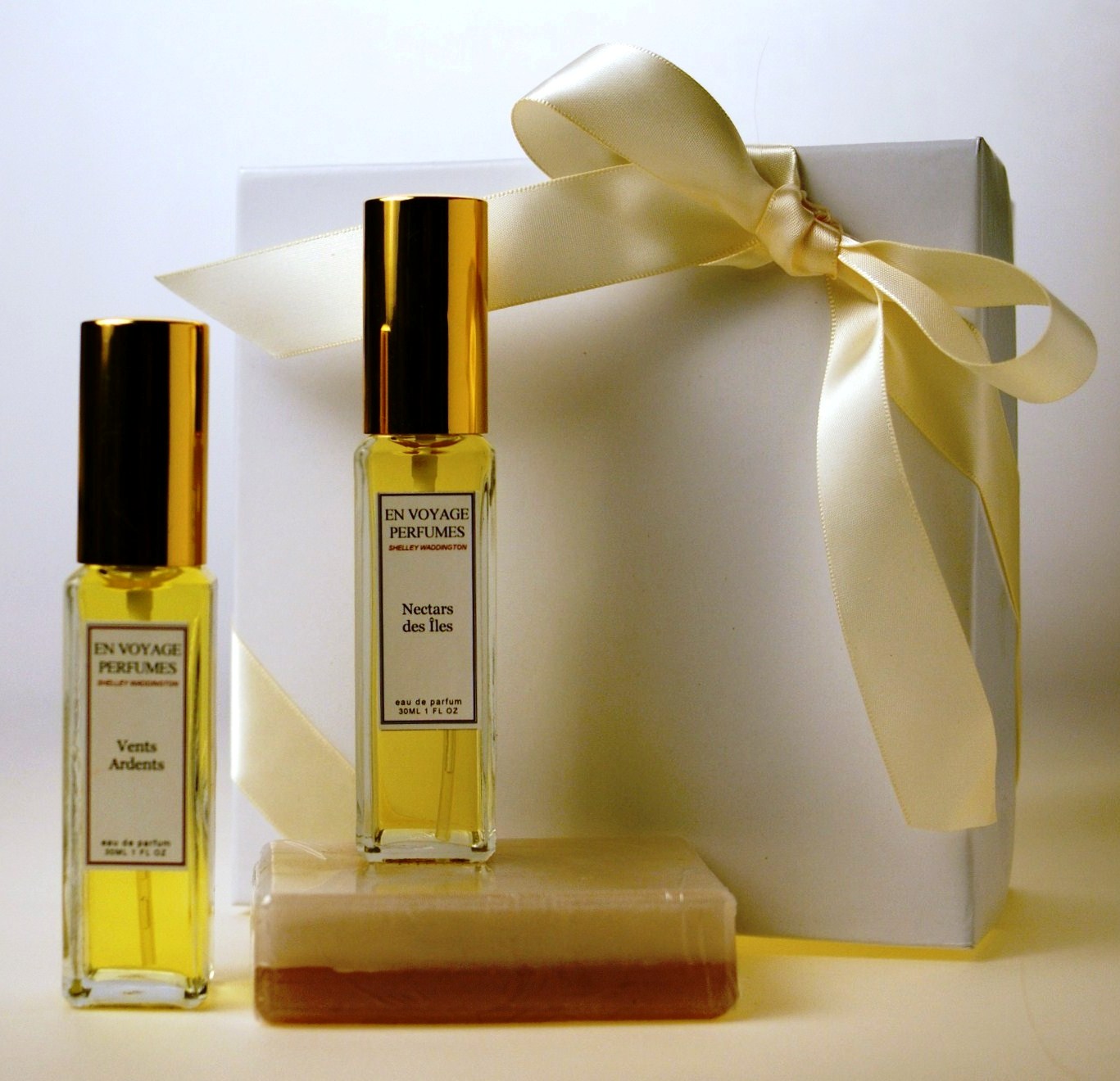
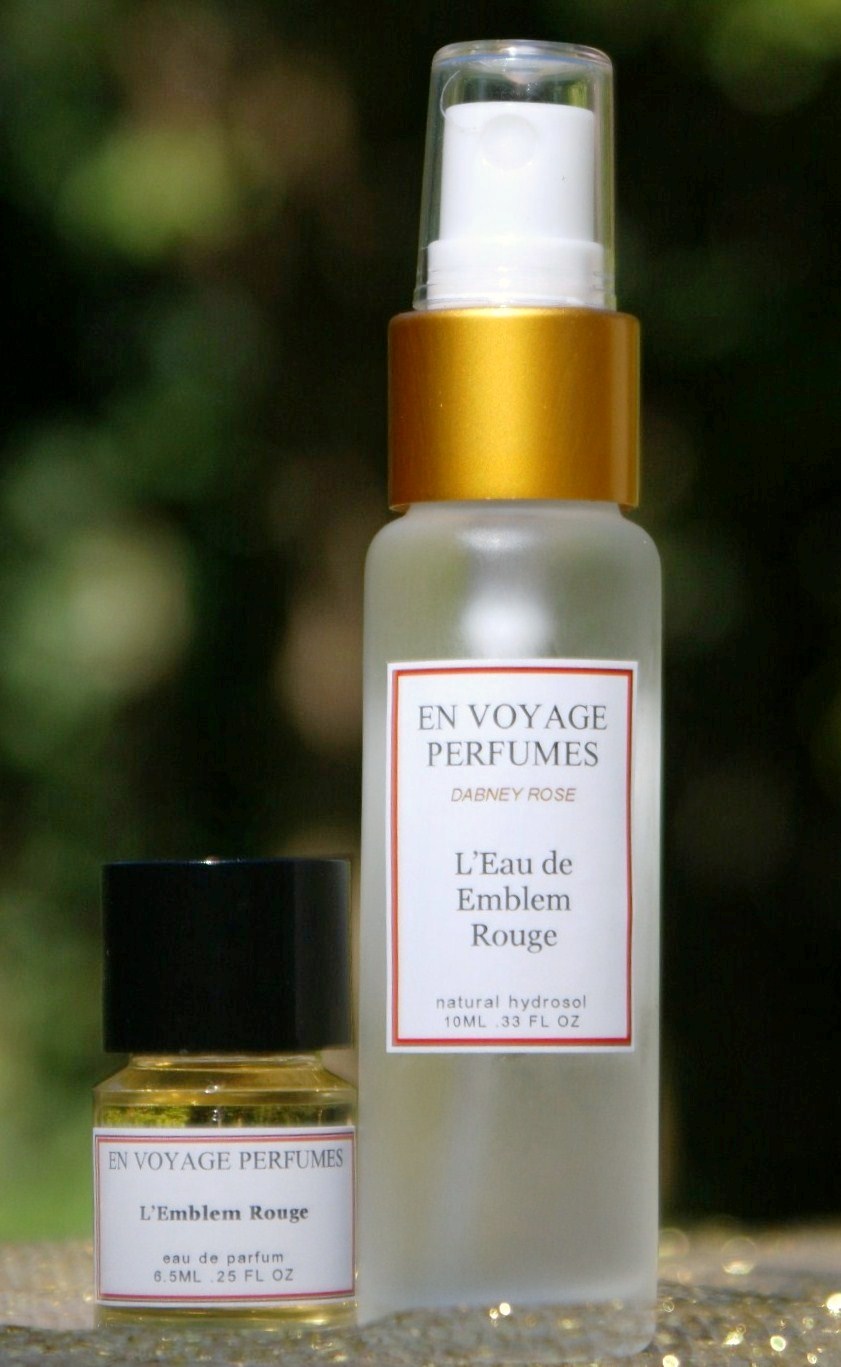
I understand that one of your popular all botanical perfumes L’Emblem Rouge, was conceived out of a project with your friend and Master Distiller Dabney Rose. Can you tell us about that?
We are friends who both enjoy the fragrance of roses. I made a special perfume to give to Dabney, selecting an otto that smelled uncommonly good, one with a dazzling array of clean, subtle under-notes just waiting for some skillful enhancing.
This delighted Dabney, and being an alchemist, she in turn transformed the perfume into pure, fragrant water, and gifted it back in its new form. If this story had a moral, it would be that, contrary to legendary belief, a rose is not a rose, Many cultivars and many methods of cultivation and production lead to wildly varying fragrance outcomes. And it could also be that two minds are better than one when it comes to invention.
The many meanings that cluster around rose – friendship, passion, love – are fulfilled in L’Emblem Rouge. It incorporates the full sensual and spiritual significance of the rose.
TPM: Talk to us about your Rose Otto that was used for L’Emblem Rouge, your rose Soliflore perfume?
In selecting oils from established producers, some crops and seasons are better than others. The one selected for this project, an Iranian eco-cert, had the complexity, roundness, depth, development and fragrance profile that I was looking for. It was brilliant in all respects.
TPM: You have been working with naturals for many years-would you consider yourself a “Natural Perfumer” or just a Perfumer that works with many materials?
I sometimes expressly set out to compose entirely with naturals, such as I did with L’Emblem Rougeand Go Ask Alice. Other times, I know I will use some aromachems as well as naturals to achieve the smell that is in my mind. It depends on the inspiration as well as the brief.  TPM: What makes one of your best selling fragrances; Makeda, so popular?
TPM: What makes one of your best selling fragrances; Makeda, so popular?
It’s been said that Makeda captures the feminine spirit of the Holy Land. It certainly captures a little known secret to the regal love story of King Solomon and the Queen of Sheba. Like all great love stories, Makeda is both uncomplicated and straightforward yet also embodies a secret complexity.
Also, it is built around the universally appealing French Jasmin sambac. Sambac is quite different from the more commonly used Jasmin grandiflorum, a little softer. It sings.
TPM: When I think of you, I believe that you have chosen a metaphysical path in perfumery as well as your everyday life. Is this true?
It’s interesting that you picked up on this, Raphaella. Although I seldom discuss it publicly this is what bridges my development from academic, minister, healer and body worker to perfumer. The concept of soma posits that neither body nor mind is separate from the other and that integration enables healing and transformation; i.e. a healthier way of being. The act of exploring and experiencing one’s inner world through sensory awareness is a means toward understanding and engaging the impulse toward growth and health. My perfumes are very much based on this holistic approach to integration and transformation.
TPM: Your Odyssey Collection of scents has been called “very seductive”. Tell us about that please.
This collection was inspired by the quest for the eternal object of desire. The elements of this central compositional theme are visceral and tactile. I wanted each fragrance to express seduction, passion and to issue a carnal siren call.
TPM: You have said that your vision for your Havâne pour Homme was of “the tango; melting into a hot Caribbean love encounter”! Tell us about this masculine fragrance!
The inspiration for Havâne pour Homme was a fantasy drawn from a composite of memories and a stunningly beautiful painting of a couple dancing the tango - to me the ultimate flirtation and so intimately defiant. I wanted the smell of sex and mojitas and clean sweat.
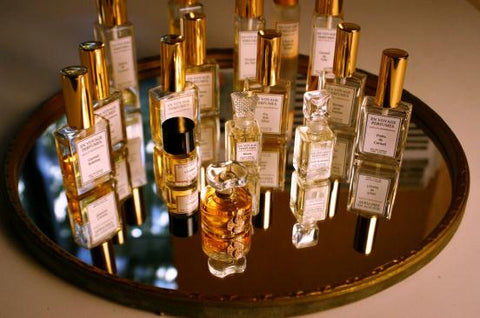

TPM: What is the oddest ingredient that you have used in perfumery?
There is always a fascination associated with the oddity of using animal ingredients such as ambergris, musk, hyrax, and castoreum in perfume. Heliotrope, however, is the oddest ingredient I’ve used. Here’s why: In the past, purified heliotropin crystals were sold in stores alongside aromatic oils, but the distribution of this compound has become subject to increased controls because it is frequently being used to manufacture illegal “designer” drugs such as Ecstasy (MDMA) and methylenedioxyamphetamine (MDA).
I find it both interesting and odd that such a useful and lovely fragrance ingredient is also listed by the FDA as a controlled drug precursor. It smells deliciously like the heliotrope flower, a lovely delicate floral with sweet, powdery, slightly coconut vanilla notes that is extracted from safrole and sassafras.
TPM: Where do you draw your inspiration for your fragrances? You are obviously an artist as well.
Everything in the physical and interior world speaks a story that is worthy of telling in fragrance. In his recent media farewell, Andy Rooney commented that he couldn’t imagine not being able to find something interesting to write about. That resonated for me, because it is so similar to the way I think about perfumery.
TPM: I always have to ask this question to perfumers: what was your favorite fragrance growing up and what did you love to wear before you became a perfumer?
I didn’t wear perfume growing up, but in adulthood I was a serial monogamist with my fragrance selections. Among my early favorites; Guerlain’s Shalimar and Samsara, Alexandra de Markoff, Norell, Clinique Elixir, Ysatis by Givenchy, First by Van Cleef & Arpels, and many of the vintage Estee Lauder perfumes. 
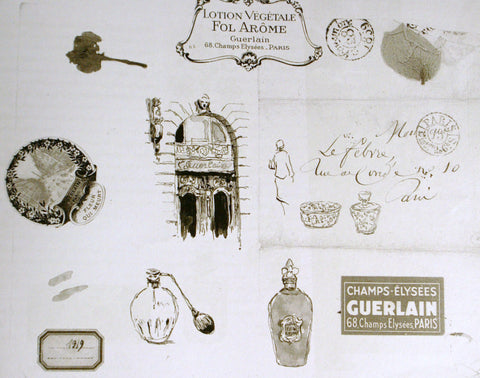
TPM: Were you inspired by any one perfumer?
Jean-Paul Guerlain, the last master Guerlain family perfumer, an immensely passionate man with an envy award winning body of work.
TPM: What is the most amazing fragrance you have ever smelled?
One warm summer night in Cyprus I was sipping drinks with friends on a veranda surrounded by a night blooming plant the locals call pakistani nights. It was a meltingly beautiful fragrance that I associate with poignant memories.
TPM: What are your favorite smells and which ones do you dislike?
Among my favorites are clean man, freshly opened tubereuse blossoms, fresh roasted coffee beans.
How I dislike urinous subway station smell. And the genetically programmed avoidance smells of the rotting, decomposing, and putrid are horrid when one gets a noseful, but a minute amount in a fine perfume is inexplicably wonderful.
TPM: Your latest release is called Vents Ardents, please describe it for us.
Vents Ardents has become a best seller. It’s meant to be a fragrance postcard of south sea cargoes of creamy fruits, bright Caribbean citrus, vanilla beans, bay, tobacco and Jamaican rum over smoky mahogany woods. Wafting island fragrances of narcissus and heliotrope accompany the fragrance of salty waves and driftwood on sun swept sandy white beaches.
TPM: You also teach ongoing perfume classes in person and on-line?
Yes. I welcome serious students who ask to visit my studio for help in achieving their blending goals. Online, I currently teach the only course on the topic of natural isolates, which I hold both privately and for the Natural Perfume Academy.
TPM: Before we close, you must tell us about your three upcoming natural perfumes that will be released shortly.
I’m happy to give an advance preview to your readers, Raphaella. All three are new additions toThe Rubicon Collection of natural perfumes. The first one is a truly metaphysical perfume:
Eight is a natural solid in a beautiful compact, very spiritual and empowering. It is formulated specifically for attracting prosperity.
Top Notes -Sweet Orange: Associated with modern quests, to strengthen the seeker or to reward the victorious. Coconut: In Northern India is esteemed as the fruit of Sri, the goddess of prosperity.
Heart -Chocolate: Used by tribes of South America as an offering to please the spirits
French Iris: Magically, the iris is most desirable. It is believed to enhance romance, helping one to attain companionship andlove. The iris is known for its ability to bring protection and may be used to study the mysteries of the High Priestess card. It may be brought into rituals associated with the Spring Equinox, helping one work with Mother Nature and further one’s work with the new growth of spring. Sumatran Patchouli: An aphrodisiac herb of love, corresponding with the Emperor and Empress cards. It is believed to create allure in attracting a desirable partner. Turkish Rose: Represents all aspects of the Goddess: the ability to love and nurture, and to see beauty in all things.
Base Notes -Woods: Intrinsically linked with the sacred grove, and deeply planted in the subconscious as a source of power.
Balsams: Represent the divinity’s ability to move into manifestation. Assists the conscious mind in maintaining focus and generates a sense of reverence and respect for the stunning beauty of the manifest Universe.
Go Ask Alice, the winner of the Martha’s Vineyard Islander’s Choice Award, will also be available soon. In the recentPerfume Pharmer Summer of Love Event. this perfume was declared by numerous bloggers as among their top three favorites.
Titania, an aromatic fougere, honors Shakespeare’s beautiful queen of the fairies and evokes the fragrant wooded forest bower where she slept, enchanted by a magical flower. Titania received positive critical acclaim in the Essensual Alchemy Shakespeare Exposition.
All three will be available in November on website www.envoyageperfumes.com
Giveaway!
Shelley Waddington has graciously given us a
1/8 oz Go Ask Alice EDP in a Crystal Brosse Bottle for one lucky person.
Click here to find out how you can win
EnVoyage Perfumes to Release New Perfume Go Ask Alice,
Award-Winning Perfume available to the public for the first time
EnVoyage Perfumes will release its award-winning Go Ask Alice perfume to the public on November 1, 2011. Go Ask Alice eau de parfum, developed last summer for a professional indie perfume competition, received high praise from celebrities Carly Simon, Patti Austen, Broadway singer Simone (daughter of Nina Simone), and was the top pick of Gillian Ferrabee (Cirque du Soleil).
Go Ask Alice, the first-place winner of the prestigious Martha’s Vineyard Islander’s Choice Award was also ranked highly by many blogs who called her work "Seriously Gorgeous Work” and“Absolutely Stunning.”
“I wanted to compose a perfume that would define and contemporize the 1967 Summer of Love, a time when young Americans protested the Vietnam War, sold flowers, smoked pot, and trailed clouds of patchouli, reports perfumer Shelley Waddington. “My biggest challenges were in retaining the authenticity and the surrealistic quality of this iconic theme while achieving my goal to contemporize and raise it to the level of a classy, wearable, and versatile perfume."
Go Ask Alice is an oriental-gourmand with top notes of California orange peel, bitter orange Caribe, bergamot from Calabria, Sri Lankan black pepper, and orange flower laced with fresh raspberry and strawberry.
The heart notes contain patchouli leaf tincture, mimosa blossoms, and rose absolue.
Vintage patchouli Sumatra, sandalwood deux, cocoa, vanille, tonka, labdanum Spain, balsam Peru France, and beach-washed ambergris provide a deep creamy base.
Perfumer Shelley Waddington, founder and owner of EnVoyage Perfumes, has developed many devoted followers, earning her global recognition from fellow perfumers and people of note in the worlds of fine fragrance and art. With a carefully curated catalog of scents to choose from, her three collections: The Odyssey Series, which includes the exotic Makeda, the only perfume to honor the Biblical Queen of Sheba’s true name, the evocative Carmel by the Sea collection which includes award winning Poéte de Carmel, and the all-natural Rubicon Collection which includes award-winning Go Ask Alice.
